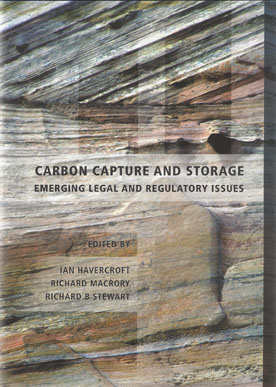We are now closed for the Christmas and New Year period, returning on Monday 5th January 2026. Orders placed during this time will be processed upon our return on 5th January.

Carbon Capture and Storage is increasingly viewed as one of the most significant ways of dealing with green house gas emissions. Critical to realising its potential will be the design of effective legal regimes at national and international level that can handle effectively the challenges raised but without stifling a new technology of potential great public benefit.
These include long term liability for storage, regulation of transport, the treatment of stored carbon under emissions trading regimes, issues of property ownership, and increasingly the sensitivities of handling the public engagement and perception.
With the first demonstration plants on the horizon, the last few years have already seen some remarkable legal development, particularly in Australia, the European Union, and the United States. This important book brings together some of the world's leading practitioners and scholars working in the field to provide a critical assessment of progress to date.
Chapters cover developments in international law, as well as the European Union, North America, and Australia, with perspectives from China and India. Finance and questions of public perception and participation receive particular attention. Throughout the study, authors consider significant trends, critically evaluate progress to date, and identify key legal gaps and obstacles that still need to be addressed.
Carbon Capture and Storage will be essential reading for lawyers, policy-makers, and decision-makers in industry involved in climate change policy and law.